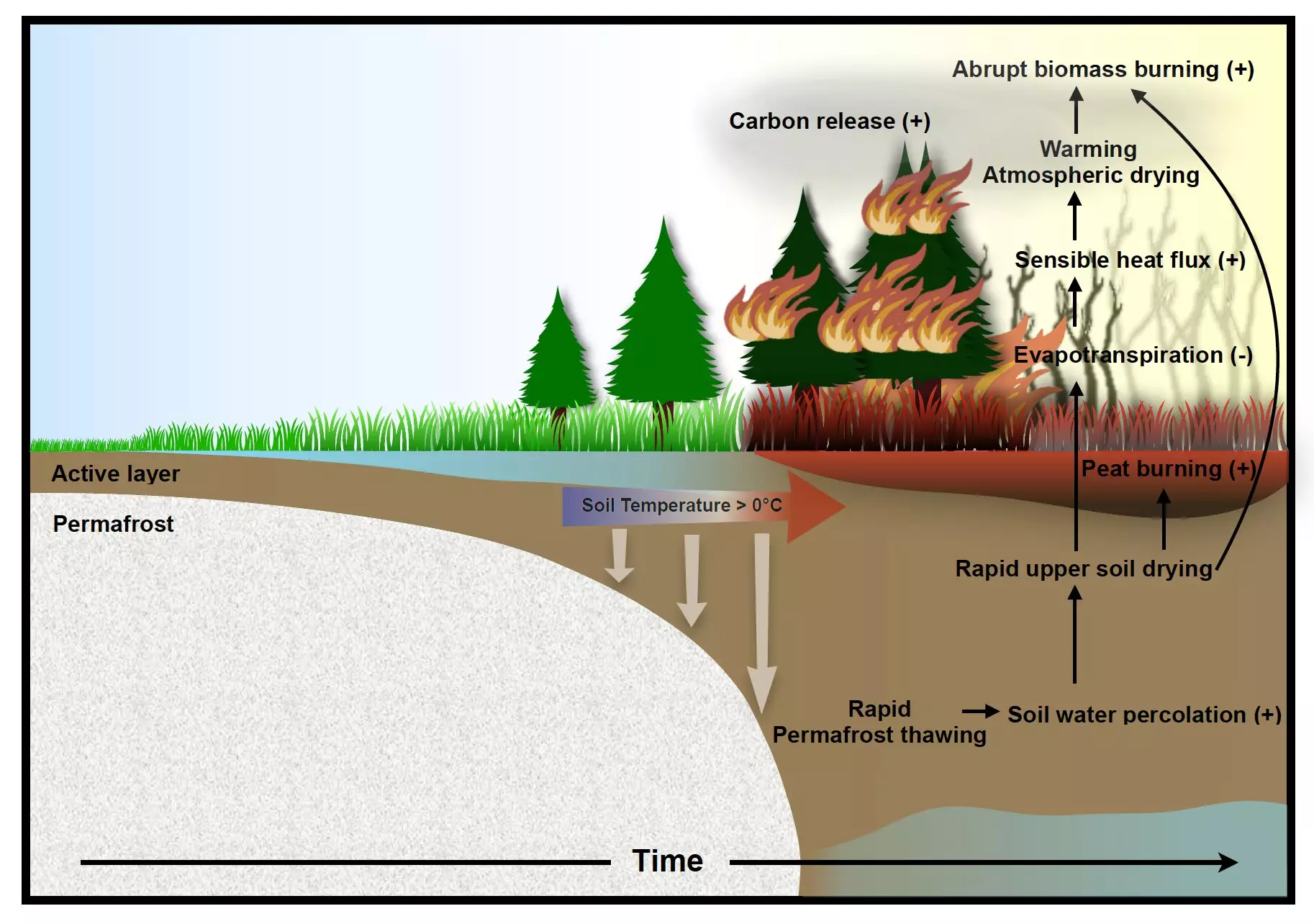Recent developments in climate science have shed light on the intricate relationship between global warming, permafrost thawing, and the increasing frequency and intensity of wildfires in the Arctic and Subarctic regions. A groundbreaking study published in *Nature Communications* underscores these dynamics, revealing a dire forecast for the future. As the planet continues to warm, the repercussions on these fragile ecosystems become more pronounced, suggesting a terrifying feedback loop that could exacerbate the effects of climate change.
Permafrost, a permanently frozen layer of soil, plays a crucial role in determining the hydrological characteristics of landscapes in northern latitudes. The recent research illustrates how, with climbing temperatures, the thawing of permafrost releases previously trapped moisture, altering soil water content significantly. This shift is pivotal, as it directly influences wildfire risk—drier soil conditions are more conducive to intense fires. The study utilized advanced computer models to grasp these relationships, emphasizing that traditional models often overlooked the interactions between permafrost dynamics, soil moisture, and biomass variations.
The insight gained from this research highlights the broader implications of thawing permafrost. With a greater understanding of how such dynamics interrelate, scientists can more accurately predict future wildfire behavior in these regions.
The study stands out by employing the Community Earth System Model, which offers an intricate view of the interdependencies between soil moisture, permafrost, and wildfires. By analyzing data from 1850 to 2100, researchers could isolate human-induced climate change impacts from natural climate variability. This method is essential, as distinguishing these influences allows for a clearer picture of the future, leading to a more nuanced understanding of how anthropogenic factors are accelerating permafrost thawing and wildfire prevalence.
The researchers forecast a dramatic shift—a transition from nearly fire-free landscapes to a scenario with frequent, intense wildfires occurring within a matter of years. This abrupt change underscores the urgency of addressing climate change and enhancing predictive capabilities in climate modeling.
Compounding the wildfire risks is the phenomenon known as the CO2 fertilization effect. Rising atmospheric CO2 levels promote vegetative growth in high-latitude regions, inadvertently providing additional fuel for wildfires. This paradoxical situation enhances the potential for more intense fires, and highlights the complexity of ecological interactions in a warming world. As ecosystems react to changing conditions, their responses can further complicate our understanding of climate feedback mechanisms.
Dr. In-Won Kim, the lead author, emphasizes that understanding these variables is essential for effective climate projections. The study calls for more precise simulations that incorporate small-scale hydrological processes, which have not been fully addressed in existing models. Improved accuracy can lead to better preparedness and response strategies for the anticipated influx of wildfires.
The implications of intensified wildfires extend beyond immediate ecological destruction—they also significantly contribute to greenhouse gas emissions. As wildfires release carbon dioxide, black carbon, and organic carbon into the atmosphere, they create a cyclical relationship that feeds back into the permafrost thawing processes. This feedback loop poses a serious risk, as it hints at the possibility of accelerating climate change even further.
Professor Axel Timmermann, a co-author of the study, highlights the necessity of integrating fire emissions into climate models. A comprehensive understanding of these interactions is crucial for developing effective strategies to mitigate climate change impacts.
The findings of this study present a stark reminder of the future trajectory of our climate system. As permafrost thaws and wildfires intensify, the interconnectedness of these processes underscores the urgency to address climate change comprehensively. Improved climate models, informed by ongoing research, will be key to predicting and managing the consequences of perpetuating these cycles. It is clear that immediate actions are necessary to avert the worst impacts of climate change and to safeguard both human and ecological health in an increasingly volatile environment.

